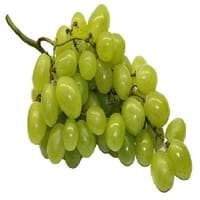Health Benefits
Cancer prevention, Kidney stone treatment, Prevents constipation, Treatment of alzheimer's disease
Cancer prevention, Diarrhea treatment, Muscle pain relief, Piles treatment, Prevents constipation, Skin cleansing, Ulcer treatment
General Benefits
Digestive aid, Improves eye vision, Maintains healthy cholesterol level, Treatment of migraine
Controls blood pressure, Digestive aid, Maintains healthy cholesterol level, Strengthens bones
Skin Benefits
Anti-aging benefits, Heals sunburn, Skin rejuvenation, Treatment of dark spots
Anti-aging benefits, Hydrates skin, Skin rejuvenation
Hair Benefits
Prevents hair loss, Regulates hair growth, Treatment of dandruff
Prevents hair loss, Shiny hair, Softening mask
Allergy Symptoms
Anaphylaxis, Asthma, Breathing difficulty, Coughing, Drop in blood pressure, Hives, Skin rash, Stuffy nose, Swelling of mouth, tongue or lips, Wheezing
Abdominal pains, Decrease in blood pressure, Dizziness, Hives, Itching of mouth, Lightheadedness, Swelling, Swelling of mouth, tongue or lips, Weak or racing pulse, Wheezing
Side Effects
Allergic reaction, Skin rash, Might slow down the process of blood clotting
Headache, Intense headache, Tooth decay
Best Time to Eat
As a snack in the late afternoon, Don't consume at night and before bed, Eat the fresh ones, avoid mixing with any other foods, don't eat after meal., Morning time (before lunch)
As a snack in the late afternoon, Don't consume at night and before bed, Eat the fresh ones, avoid mixing with any other foods, don't eat after meal.
Vitamin B5 (Pantothenic Acid)
Vitamin C (Ascorbic Acid)
Vitamin K (Phyllochinone)
Calories in Fresh Fruit with Peel
Calories in Fresh Fruit without Peel
Not Available
Type
Berry
Berry, Tropical
Season
Autumn, Summer
All seasons
Varieties
Cabernet Sauvignon, Merlot, Pinot Noir, Syrah/Shiraz and Zinfandel
Cavendish Bananas, Lady Finger Bananas, Pisang Raja, Williams Bananas and Cooking Bananas
Color
Green, Red
Green, Yellow
Inside Color
Light Green
White
Shape
Oval
Curving Cylinder
Origin
Western Asia, Central Europe
Papua New Guinea
Soil Type
Clay loam, Sandy loam
Well-drained
Climatic Conditions
Warm
Warm
Facts about
- If left alone, a grapevine can spread 50 feet and even more.
- There are more than 8,000 varieties of grape worldwide.
- They are available in 7 different colors: red, green, white, black, purple, blue and golden.
- As bananas contain potassium-40 which is radioactive isotope of potassium, bananas are radioactive.
- Bananas float in water.
- There are around 1000 varieties of bananas.
- Eating this fruit will cheer you up.
Other Countries
Argentina, Armenia, Australia, Chile, France, Iran, Italy, Portugal, Romania, Turkey, United States of America
Brazil, Cameroon, China, Colombia, Ecuador, Ghana, Indonesia, Philippines, Uganda
Top Importer
United States of America
Europe
Top Exporter
Chile
Ecuador
Botanical Name
Vitis vinifera
Musa acuminata and Musa balbisiana
Synonym
Not Available
Musa × dacca , Musa × sapidisiaca , Musa × sapientum
Subkingdom
Tracheobionta
Tracheobionta
Division
Magnoliophyta
Magnoliophyta
Class
Magnoliopsida
Liliopsida
Subclass
Rosidae
Liliidae
Order
Vitales
Zingiberales
Species
Vitis vinifera
M. acuminata , M. balbisiana
Generic Group
Grape
Banana
Compare Grape and Banana
It is important compare Grape and Banana as both the fruits have a different nutritional value. Their comparison can be done on the basis of their vitamin and mineral content, calories, benefits as well as characteristics, making it easier for us to choose the best fruit for our diet. Their general health benefits are as follows:
Grape Benefits: digestive aid, improves eye vision, maintains healthy cholesterol level and treatment of migraine.
Banana Benefits: controls blood pressure, digestive aid, maintains healthy cholesterol level and strengthens bones.
Fruits are also used as a remedy for various hair problems. The hair benefits of Grape are: prevents hair loss, regulates hair growth and treatment of dandruff and hair benefits of Banana are: prevents hair loss, shiny hair and softening mask. Some fruits are known to cause allergic reactions. The allergy symptoms of first fruit are: anaphylaxis, asthma, breathing difficulty, coughing, drop in blood pressure, hives, skin rash, stuffy nose, swelling of mouth tongue or lips and wheezing and the symptoms of second fruit are: abdominal pains, decrease in blood pressure, dizziness, hives, itching of mouth, lightheadedness, swelling, swelling of mouth, tongue or lips, weak or racing pulse and wheezing. Get sorted Grape vs Banana comparison with the help of fruit comparison tool by fruitvs.com.









